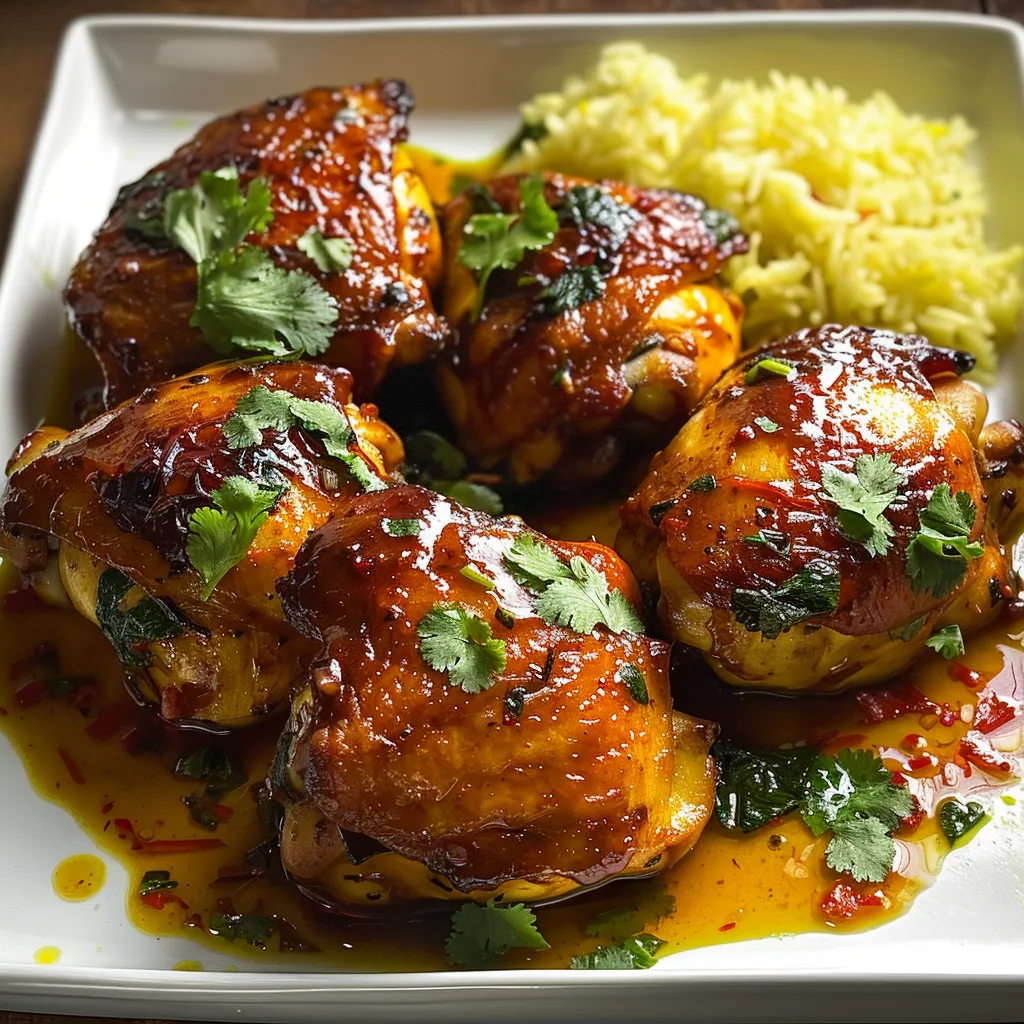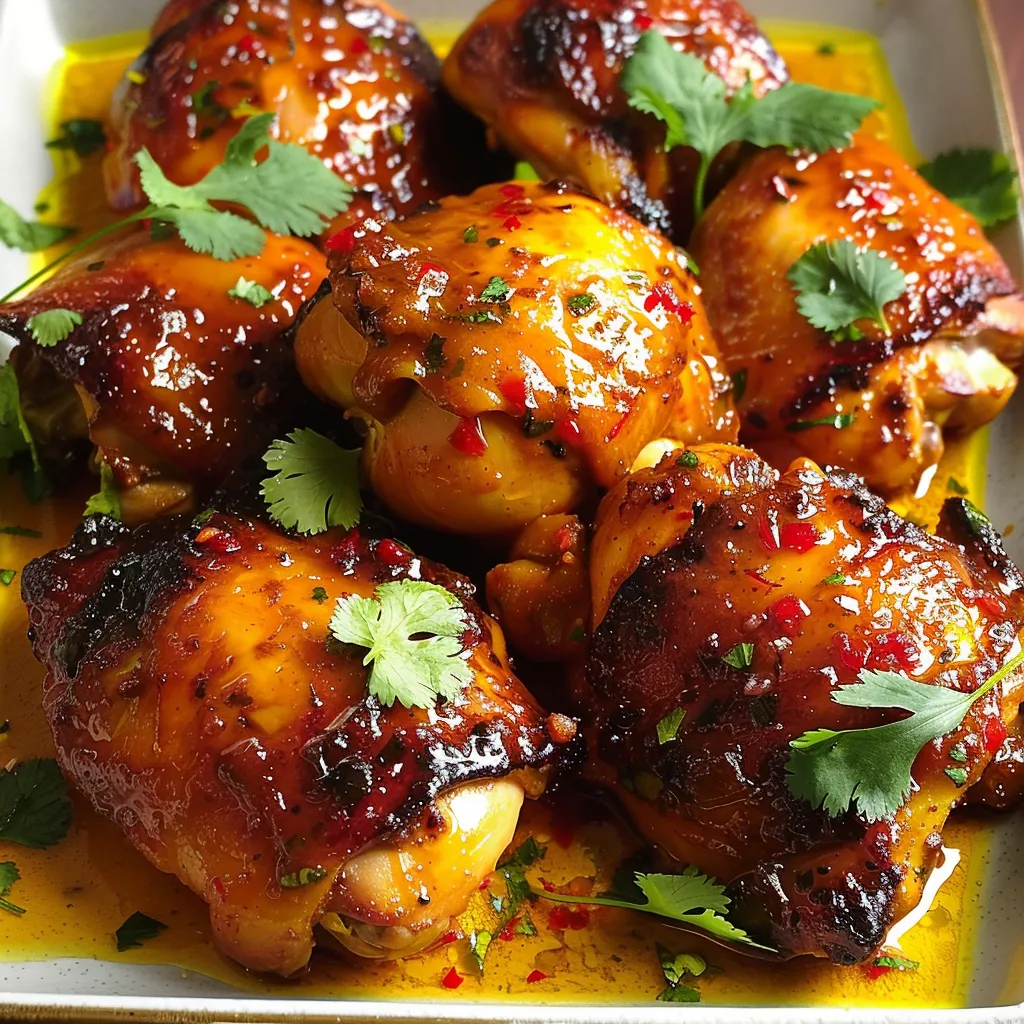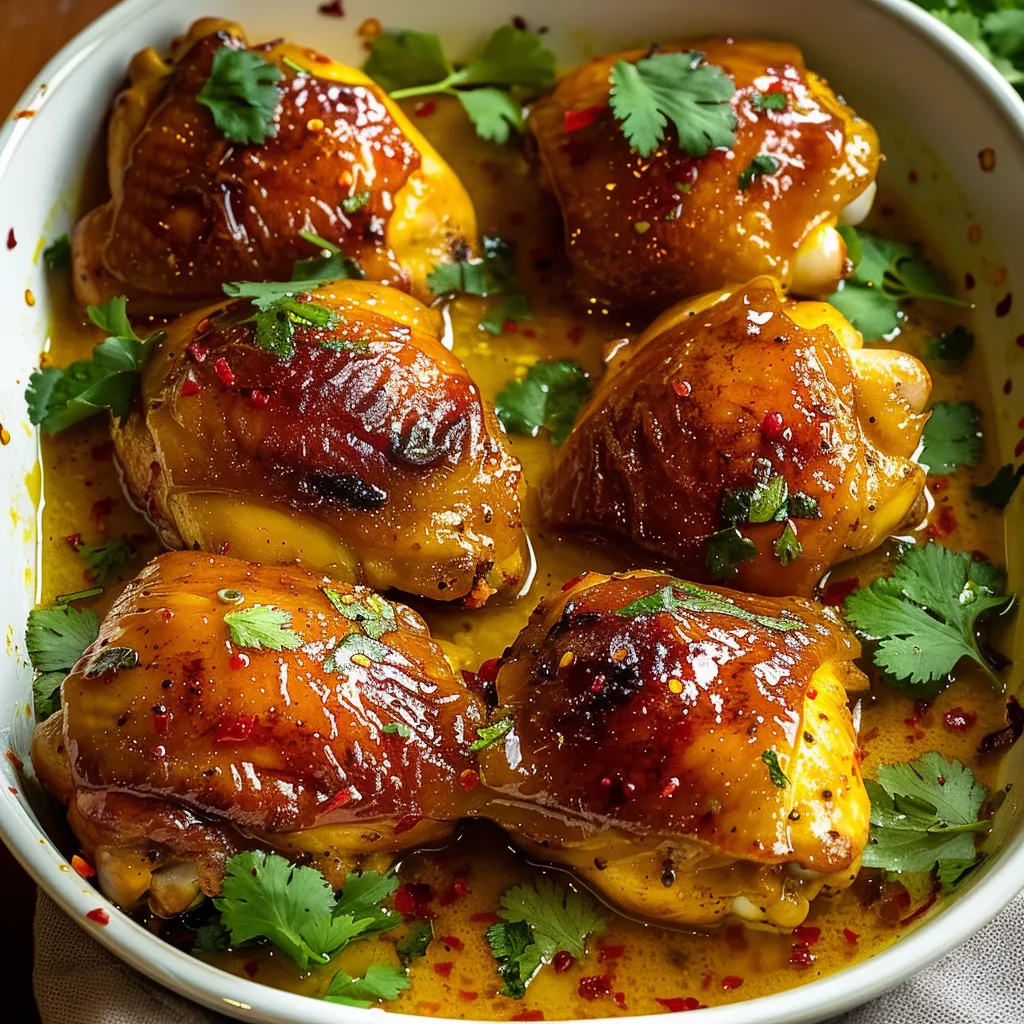 Pin it
Pin it
Gai Yang Khamin transforms your kitchen into a bustling Thai street food paradise, filling the air with an intoxicating blend of aromatic spices and caramelizing sugar. This golden-hued chicken dish, deeply rooted in Southern Thai cuisine, masterfully balances turmeric's earthy warmth with the umami depth of fish sauce and the rich sweetness of oyster sauce. Each bite delivers layers of complex flavors that develop during marination, culminating in a sticky, lacquered finish that epitomizes Thai street food at its finest.
After discovering this dish from a street vendor in Hat Yai, I spent months perfecting the balance of flavors. The magic lies in allowing the chicken to marinate overnight, giving the turmeric and aromatics time to work their way into every fiber of the meat. My Thai neighbor praised this version as reminiscent of her grandmother's recipe, which I consider the highest compliment.
Essential Ingredients Guide
- Chicken Thighs: Select premium, skin-on, bone-in thighs weighing 250-300g each for optimal results. The fat content in thighs guarantees succulence while preventing the meat from drying out during the extended cooking process
- Fish Sauce: Choose high-quality Thai fish sauce that lists only anchovies, salt, and water as ingredients. The sauce should be translucent amber, never murky, delivering pure umami without overwhelming fishiness
- Oyster Sauce: Premium brands contain real oyster extractives, creating deep complexity rather than just saltiness. The sauce should be glossy and thick, coating the back of a spoon
- Turmeric: Fresh ground turmeric powder offers the brightest color and most complex flavor. Store in an airtight container away from light to preserve its potency
- White Pepper: More delicate and aromatic than black pepper, it provides gentle heat without dark specks in the golden sauce
- Brown Sugar: Dark brown sugar contains more molasses, creating a richer caramel flavor and helping achieve that coveted sticky glaze
Creating Your Perfect Gai Yang
- Marinade Development:
- Start by thoroughly mixing garlic and spices until they form a uniform paste. Gradually incorporate the liquid ingredients, whisking continuously to ensure the sugar dissolves completely. The marinade should have the consistency of thick paint, coating your whisk and falling in slow, steady ribbons.
- Temperature Management:
- Begin cooking at 180°C (350°F) to allow the meat to cook evenly through to the bone while the marinade slowly caramelizes. The final increase to 200°C (390°F) creates the signature sticky exterior without burning the sugars. Monitor the chicken's color carefully during this stage.
- Basting Methodology:
- Every 10 minutes, collect the pan juices and brush them back onto the chicken, paying special attention to any areas that appear dry. The juices become increasingly concentrated as they reduce, building complex layers of flavor and a glossy finish.
- Critical Resting Phase:
- Place the cooked chicken on a warm platter, loosely tented with foil. This 10-minute rest allows the meat's internal temperature to equalize while the juices redistribute throughout the flesh, ensuring each bite remains perfectly succulent.
 Pin it
Pin it
The relationship between turmeric and chicken was a revelation to me. While testing this recipe, I discovered that the fat in chicken thighs actually helps carry turmeric's beneficial compounds through the meat, creating not just incredible flavor but also making the dish more nutritious.
Perfect Pairings
Transform your meal into a complete Thai feast by serving the chicken alongside fragrant jasmine rice cooked with a pandan leaf. Balance the rich flavors with som tam - a bright green papaya salad that cuts through the richness with lime and chili. Add cooling cucumber slices marinated in rice vinegar and a scatter of Thai basil leaves. For special occasions, I serve it with coconut rice infused with lemongrass and accompanied by a spicy nam jim jaew dipping sauce made from tamarind, fish sauce, and toasted rice powder.
Thoughtful Variations
Elevate this dish further by adding two stalks of bruised lemongrass and kaffir lime leaves to the marinade for added complexity. For a coastal twist, incorporate dried shrimp powder into the marinade. During grilling season, cook the chicken over indirect heat on charcoal, adding soaked wood chips for smokiness. Create a party-friendly version using wings or drumettes, reducing cooking time to 25-30 minutes while basting frequently.
Storage Wisdom
Keep leftovers in a glass container to prevent staining, separating layers with parchment paper to maintain the glaze. Reheat in a 325°F oven, covered with foil and a splash of chicken stock to restore moisture. For meal prep, portion marinated chicken into vacuum-sealed bags, removing all air to prevent freezer burn. These packets can be stored for up to three months, serving as a perfect foundation for quick weeknight meals.
 Pin it
Pin it
This recipe embodies the essence of Thai street food - humble ingredients transformed through time-honored techniques into something extraordinary. The marriage of turmeric's earthiness with sweet caramelization creates a dish that's both deeply comforting and excitingly novel. Whether served at a family gathering or casual weeknight dinner, this chicken consistently draws praise for its perfect balance of sweet, savory, and aromatic elements.
Frequently Asked Questions
- → How long should I marinate the chicken?
- Marinate for at least 3 hours, but overnight is best for maximum flavor development.
- → Can I use different chicken cuts?
- Yes, you can use drumsticks, boneless thighs, or breast, but cooking times will vary and bone-in thighs give the best results.
- → What's the best way to serve this dish?
- Serve with jasmine or coconut rice, and chunks of fresh cucumber and tomato in traditional Thai style.
- → Can I cook this on the BBQ?
- Yes, cook on medium heat for about 15 minutes total, basting with marinade throughout.
- → Why does the recipe use two different temperatures?
- The initial lower temperature cooks the chicken through, while the higher temperature at the end helps caramelize the skin.
